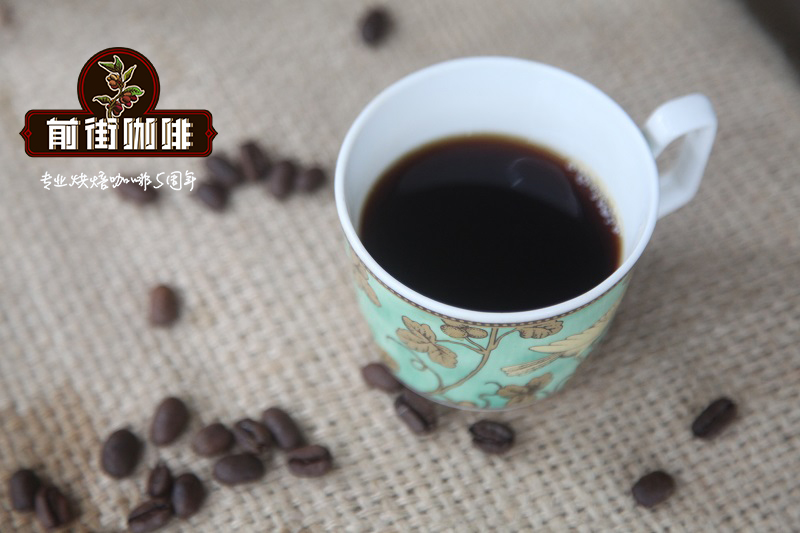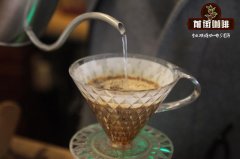Which brand of Indonesian coffee is better? Mantenin tiger coffee is no less than gold manning in flavor and taste.

Professional coffee knowledge exchange more coffee bean information please follow the coffee workshop (Wechat official account cafe_style)
Qianjie-Indonesian Coffee Brand Indonesian Tiger Mantenin
Manning coffee is most famous for its golden manning, and many people travel thousands of miles to Qianjie in pursuit of the mellow taste of golden manning, of course, because good coffee attracts coffee fans. But although the gold mantenin is good, it is not often available, so you can try another one that is no less famous than the golden manning-tiger mantenin.
Tiger Mantenin grows on a hillside of about 1500 meters. The humid tropical rain forest climate brings rich rainfall, and volcanic soil brings nutrients, but because of the constant humidity, [wet planing] is used to shorten the drying time, using 88 degrees 89 degrees water, granulated sugar size, Kono filter cup cooking, water powder ratio 1:14, steaming for 30 seconds, and then one stage brewing, obvious dark chocolate and cream taste, high cleanliness.
Every year from March to May and September to December is the Sumatra harvest season for Manning, and now most coffee farmers only harvest all-red coffee cherries. After collecting coffee cherries in the morning, coffee cherries will be peeled and peeled in the afternoon. Sumatra has a superior natural environment, and most of the water used will be mountain spring water.
1. Peel the coffee fruit, put the shell beans into a vat or sink filled with water, and remove the defective shell beans floating on the liquid surface.
2. Wash the dense shell beans sunk to the bottom of the water slightly, put them into a bucket or plastic bag, and do a little dry body fermentation, that is, to ferment and flavor the pectin sugar on the surface of the seed shell. Basically, the longer the fermentation time, the more sour. The fermentation time varies from person to person, generally only a few hours, but some manors omit the dry body fermentation stage and directly expose the shell beans, which can always be sour and improve the sticky taste, so that the pectin sugar can be fully fermented to increase the flavor, usually between 12-36 hours, depending on the specific situation.
3. When the bean with shell is exposed to the sun for one or two days, the moisture content of the bean body is 30% 50%, and the bean body is still semi-hard and semi-soft. Wipe off the seed shell with a shell planer to speed up the drying process. After about two days, the moisture content of the bean reaches 12% Mui 13%. The coffee beans will be collected into a woven bag, usually 40 kg and 80 kg each, and will be sent to the coffee processing factory for shelling, and the success will be completed in about four days. The shelling process is to grind off the bean shell with a shell planer and then dry it until the moisture content reaches about 12% to 15%. The coffee beans are then sent for machine selection to remove a variety of impurities and then sorted by particle size.
Indonesian tiger Mantenin
Producing area: Aceh
Varieties: Caturra, Typica, Sidikalong
Soil: volcanic soil
Altitude: 1500m
Treatment method: wet planing method
Flavor: nuts, cream, caramel, dark chocolate
Knowledge expansion: there are many sources of defective beans in wet planing. First of all, there must be some natural defects in the coffee fruit, and another defect contributor is the shelling part, the corrosion of the wet shell beans during transportation, the damage of sunlight and moisture to the naked raw beans, and one point, the uneven drying speed brought by irregular weather also reduces the flavor.
END
Important Notice :
前街咖啡 FrontStreet Coffee has moved to new addredd:
FrontStreet Coffee Address: 315,Donghua East Road,GuangZhou
Tel:020 38364473
- Prev

What is the best coffee brand in Indonesia? gold Manning has the best taste and flavor.
Professional coffee knowledge exchange more coffee bean information please follow the coffee workshop (Wechat official account cafe_style) front street-Indonesian coffee brand Indonesia gold manning introduction gold manning gold is a PWN registered manning, PWN company registered the gold mantenin trademark, that is to say, only the gold manning produced by PWN company can be counted
- Next

From Sumatra Coffee Coffee Courage Manning brewing scheme parameter sharing
Professional coffee knowledge exchange more coffee bean information please follow the coffee workshop (Wechat official account cafe_style) front street-Indonesian coffee brand Indonesia Gayusan Mantenin introduction to Indonesia, is the world's largest archipelago country, the territory stretches across Asia and Oceania. Typical tropical rain forest climate, with an average annual temperature of 25-27 ℃, rich precipitation and large temperature difference between day and night.
Related
- Beginners will see the "Coffee pull flower" guide!
- What is the difference between ice blog purified milk and ordinary milk coffee?
- Why is the Philippines the largest producer of crops in Liberia?
- For coffee extraction, should the fine powder be retained?
- How does extracted espresso fill pressed powder? How much strength does it take to press the powder?
- How to make jasmine cold extract coffee? Is the jasmine + latte good?
- Will this little toy really make the coffee taste better? How does Lily Drip affect coffee extraction?
- Will the action of slapping the filter cup also affect coffee extraction?
- What's the difference between powder-to-water ratio and powder-to-liquid ratio?
- What is the Ethiopian local species? What does it have to do with Heirloom native species?

